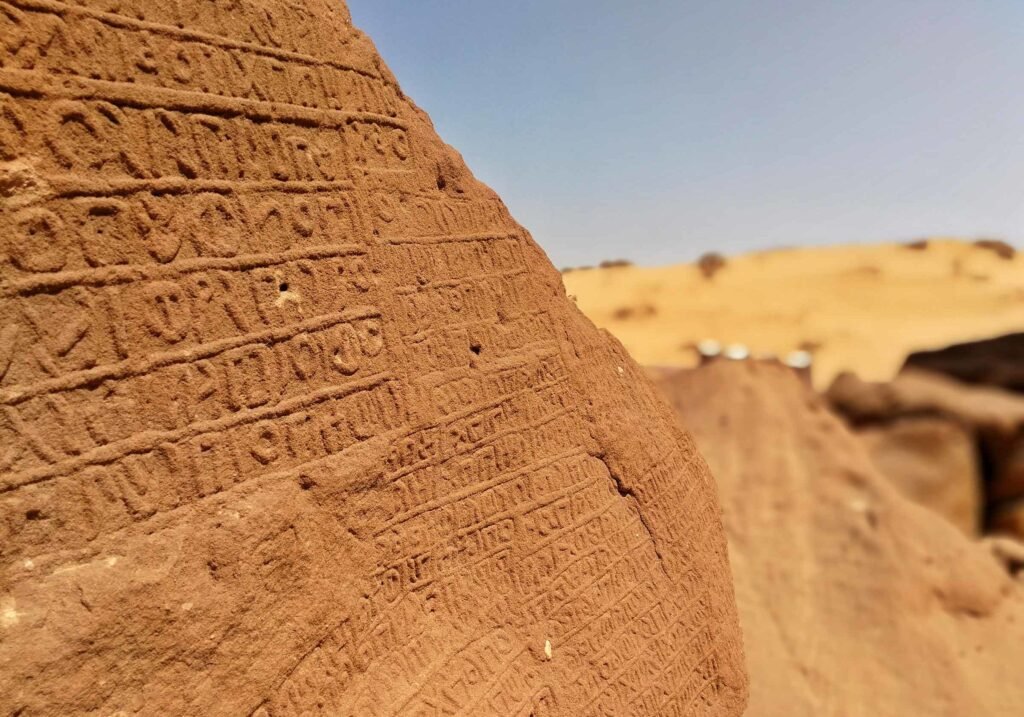

Pic Courtesy : Aflula
Alula History in Islam : AlUla, a gem nestled in the heart of Saudi Arabia, boasts a rich tapestry woven from history and faith. This ancient city is not just known for its breathtaking landscapes but also holds profound significance in Islamic heritage. From its connections to Prophet Muhammad to its archaeological treasures, Al-Ula’s story is one that resonates through time. As we delve into Alula history in Islam, prepare to uncover layers of culture and spirituality that make this destination truly unique.
Alula History in Islam
Al-Ula is steeped in history, holding a significant place within Islamic tradition. Its ancient ruins and archaeological sites tell tales of past civilizations that once thrived in the region. The historical significance is evident through its timeline and heritage villages, showcasing a blend of cultural narratives.
The connection to Prophet Muhammad further enriches Al-Ula’s legacy. These ties provide insights into early Islamic life and offer a glimpse into the spiritual essence that continues to draw visitors today.
1. Introduction
Al-Ula is a gem of historical and cultural significance, nestled in the northwest region of Saudi Arabia. Its rich landscape boasts ancient rock formations, monumental tombs, and archaeological sites that narrate stories from centuries past.
In Islamic history, Al-Ula holds a unique place due to its connections with Prophet Muhammad and early Islamic events. Understanding Al-Ula’s history provides valuable insights into its role in shaping the Arabian Peninsula’s spiritual heritage.
2. Historical Significance of Al-Ula
Al-Ula is a treasure trove of history, nestled in the northwest of Saudi Arabia. It served as a vital crossroads for ancient trade routes, connecting the Arabian Peninsula with the Mediterranean and beyond.
The region boasts remarkable archaeological sites, including rock-carved tombs and ancient inscriptions. Its historical significance is further enriched by its role in various civilizations, making Al-Ula an essential piece of Saudi heritage that attracts historians and travelers alike.
Timeline
The history of Al-Ula is rich and spans thousands of years. In the early centuries, it served as a vital trade route connecting Arabia to other regions. This strategic location attracted various civilizations, including the Nabateans.
By the 1st century CE, Al-Ula became known for its impressive rock-cut tombs and thriving agricultural practices. The area witnessed significant events in Islamic history during the life of Prophet Muhammad and later periods, highlighting its enduring importance.
Heritage Village
Heritage Village in Al-Ula serves as a living museum, showcasing the region’s rich history. Visitors can explore traditional mud-brick houses and experience authentic local culture through various exhibits.
The village also highlights ancient crafts and practices, allowing guests to engage with artisans. This immersive environment brings to life the customs that shaped Al-Ula’s identity over centuries, making it an essential stop for anyone interested in understanding its historical significance.
3. Prophet Muhammad’s Connection to Al-Ula
Prophet Muhammad’s connection to Al-Ula is notable, particularly due to the area’s historical significance. The region was part of the trade route connecting Arabia with other civilizations, allowing for interactions that shaped early Islamic narratives.
There is a reason for prohibition regarding passage through Al-Ula during Prophet Muhammad’s time. It relates closely to Hegra (Al-Hijr), where he instructed his followers not to enter lands belonging to those who had faced divine punishment, ensuring respect for past events.
Reason for Prohibition
The prohibition of Al-Ula is linked to the historical events surrounding its ancient inhabitants. The people of Thamud, who once thrived in this region, faced divine punishment for their rejection of prophetic teachings. Islamic tradition holds that their disobedience led to destruction.
As a result, Prophet Muhammad advised against visiting Al-Ula as a means to avoid temptation and reflect on the consequences of ignoring divine warnings. This connection underscores the importance of faith and obedience in Islamic belief.
Relation to Hegra (Al-Hijr)
Al-Ula is closely linked to Hegra, known as Al-Hijr in Islamic tradition. This ancient city served as a key stop for caravans traveling across the Arabian Peninsula. Its significance lies in being one of the principal settlements of the Nabateans.
The archaeological site features remarkable tombs carved into rock formations. These structures reflect the advanced engineering and artistry of their time, highlighting Al-Hijr’s importance within early Islamic history and its connection to prophetic narratives.
4. The Legacy of Al-Ula
Al-Ula holds a rich legacy, often referred to as Maidan e Saleh. This UNESCO World Heritage site showcases impressive rock-cut tombs and ancient Nabatean architecture, reflecting its historical significance in early Islamic civilization.
Agha Abdou Ali Idris Sheikh played a vital role in Al-Ula’s history during the Ottoman era. His contributions helped preserve local culture and heritage, ensuring that Al-Ula remains a pivotal point of interest for scholars and travelers alike.
Known as Maidan e Saleh
Al-Ula, historically known as Maidan e Saleh, is a UNESCO World Heritage site rich in archaeological significance. It houses remarkable Nabatean tombs carved into sandstone cliffs, reflecting advanced engineering and artistry.
This ancient city served as a vital trade hub along the incense route. Its impressive ruins provide valuable insights into early Islamic civilization and the cultural exchanges that shaped the Arabian Peninsula long before Islam emerged.
Agha Abdou Ali Idris Sheikh’s Connection
Agha Abdou Ali Idris Sheikh played a pivotal role in the history of Al-Ula. As a prominent leader, he was instrumental in maintaining its cultural and economic significance during turbulent times.
His lineage traces back to influential families, which helped preserve Al-Ula’s rich heritage. Through his efforts, the region became a center for trade and scholarship, further solidifying its importance in Islamic history and culture.
5. Modern Development in Al-Ula
Modern development in Al-Ula is transforming the ancient city into a vibrant cultural hub. The Royal Commission for Al-Ula spearheads this initiative, focusing on sustainable tourism and heritage preservation.
A comprehensive development plan aims to enhance infrastructure while showcasing Al-Ula’s historical significance. The newly constructed Al-Ula International Airport will play a crucial role in facilitating access for tourists and scholars alike, fostering global interest in the area’s rich Islamic history.
Royal Commission for Al-Ula
The Royal Commission for Al-Ula was established to preserve and promote the region’s rich cultural heritage. It aims to develop sustainable tourism while maintaining the integrity of historical sites.
This initiative focuses on enhancing infrastructure, protecting archaeological treasures, and fostering economic growth in Al-Ula. The commission envisions transforming this ancient area into a world-class destination that celebrates its unique Islamic history and natural beauty.
Development Plan
The Development Plan for Al-Ula aims to transform the region into a cultural and heritage hub. This initiative emphasizes preserving its historical sites while enhancing infrastructure and tourism facilities.
Key aspects include sustainable development practices, promoting local artistry, and community engagement. The plan seeks to attract more visitors while respecting the rich Islamic history woven into Al-Ula’s identity. Through strategic investments, Al-Ula is poised to become a gateway connecting past traditions with future possibilities.
Al-Ula International Airport
Al-Ula International Airport serves as a vital gateway to this historic region. Opened in 2021, it is strategically designed to accommodate both domestic and international travelers. The airport plays a crucial role in enhancing accessibility to Al-Ula’s rich cultural heritage.
With modern facilities and efficient services, the airport aims to boost tourism while promoting sustainable travel. Its proximity to archaeological sites makes it an ideal starting point for exploring Al-Ula’s stunning landscapes and history.
6. Cultural Tourism in Al-Ula
Al-Ula is rapidly becoming a cultural hotspot, attracting visitors from around the globe. Events like the “Winter at Tantora” festival celebrate local heritage through music, art, and cuisine. This vibrant gathering offers a glimpse into Saudi culture while showcasing Al-Ula’s stunning landscapes.
The Azimuth Festival further enriches this cultural tapestry by featuring international artists and performances. Additionally, events like Persian Night highlight the region’s diverse history and multicultural influences, making Al-Ula a unique destination for travelers.
“Winter at Tantora” Festival
The “Winter at Tantora” festival is a vibrant celebration held annually in Al-Ula. It showcases the region’s rich heritage, arts, and culture through various events that attract both locals and international visitors.
Activities include concerts, art exhibitions, and culinary experiences featuring traditional Saudi cuisine. This festival not only highlights local talent but also promotes cultural exchange, making it a significant event in Saudi Arabia’s tourism calendar.
Azimuth Festival
The Azimuth Festival is a vibrant celebration that showcases music, art, and culture in the stunning backdrop of Al-Ula. This event draws international artists and performers, creating a unique fusion of contemporary expressions within historical surroundings.
Attendees can enjoy diverse genres of music while exploring immersive art installations. The festival emphasizes community engagement and tourism growth, making it a must-visit for those keen to experience the rich cultural tapestry of Al-Ula.
Persian Night in Saudi Arabia’s Al-Ula
Persian Night in Al-Ula is a vibrant celebration of culture and heritage. This event showcases the rich traditions, art, and music of Persian history while blending seamlessly with the stunning backdrop of Al-Ula’s ancient landscapes.
Attendees can enjoy traditional cuisine, live performances, and interactive exhibits that highlight the deep connections between Persian and Arab cultures. The festival fosters cross-cultural appreciation and invites visitors to immerse themselves in a unique experience reflecting centuries of shared history.
7. Conclusion
Al-Ula holds a unique place in the history of Islam, reflecting both its ancient heritage and modern significance. Its connection to notable events and figures enhances its cultural richness. With ongoing developments and vibrant festivals, Al-Ula is poised to become a key destination for those seeking an authentic experience steeped in Islamic history. As it continues to evolve, Al-Ula’s legacy will undoubtedly captivate future generations while honoring its historic roots.
